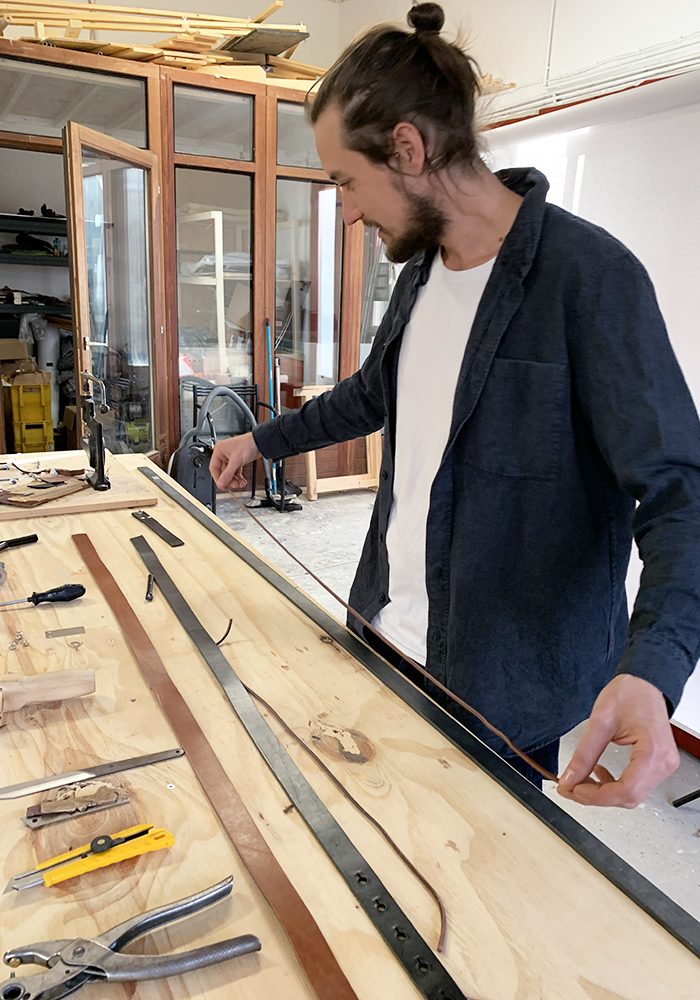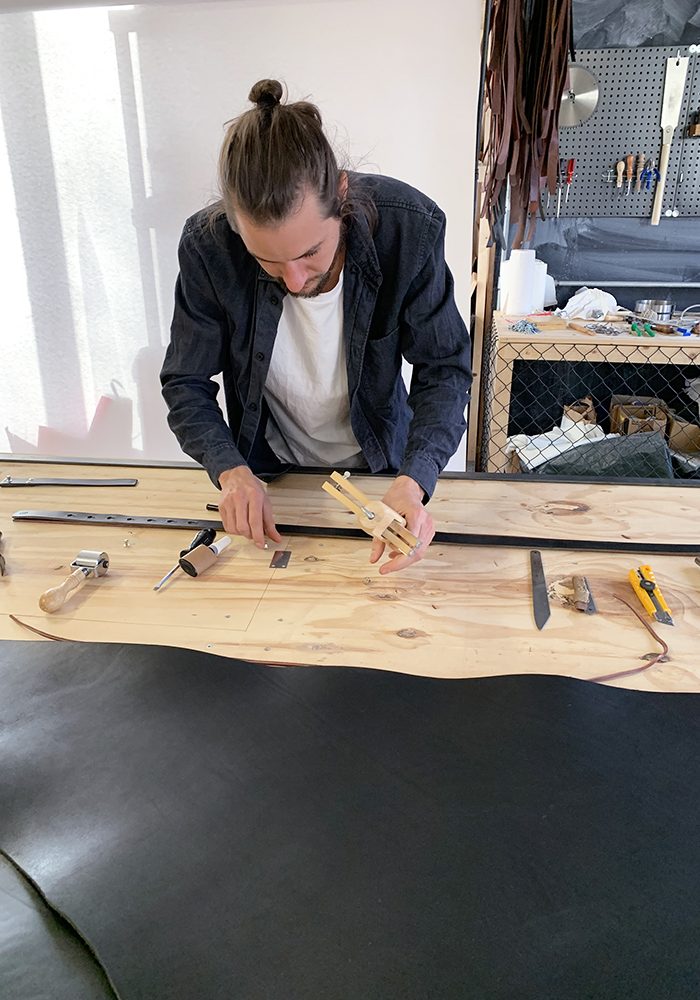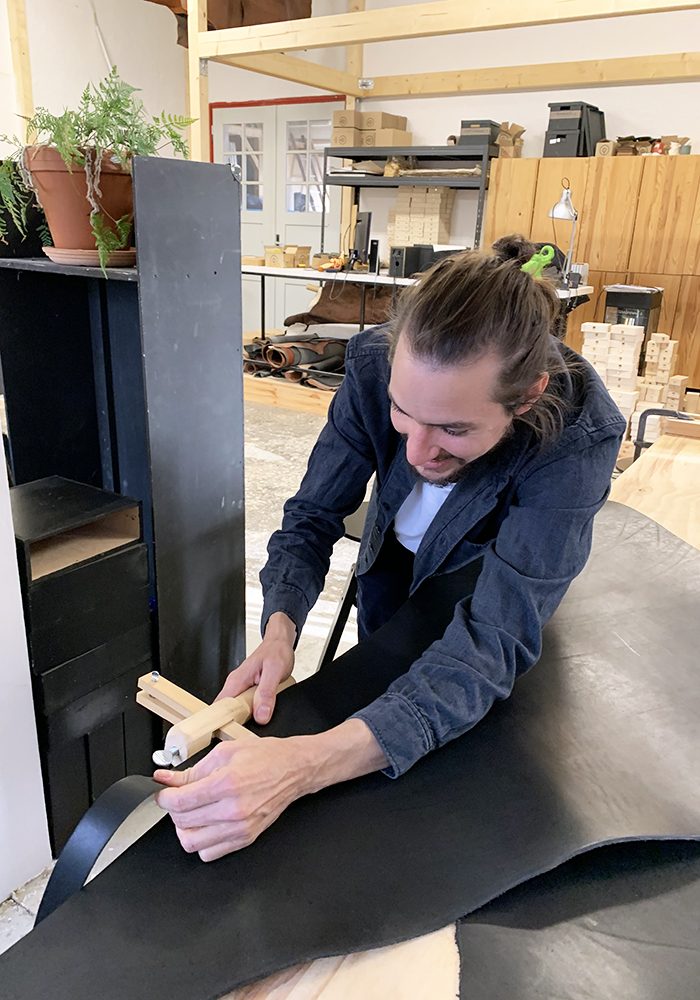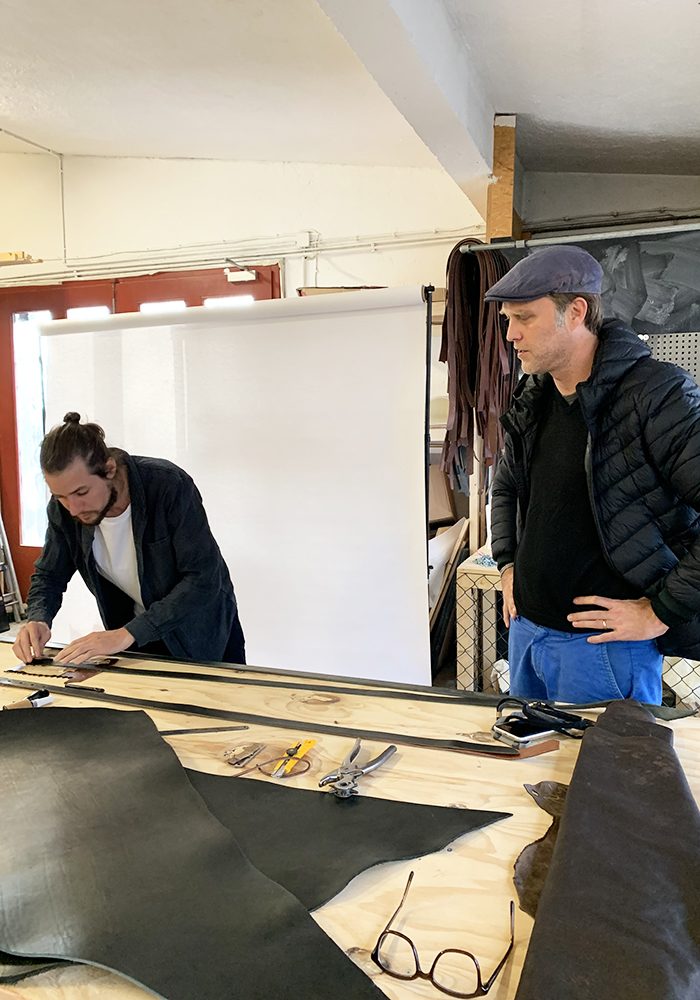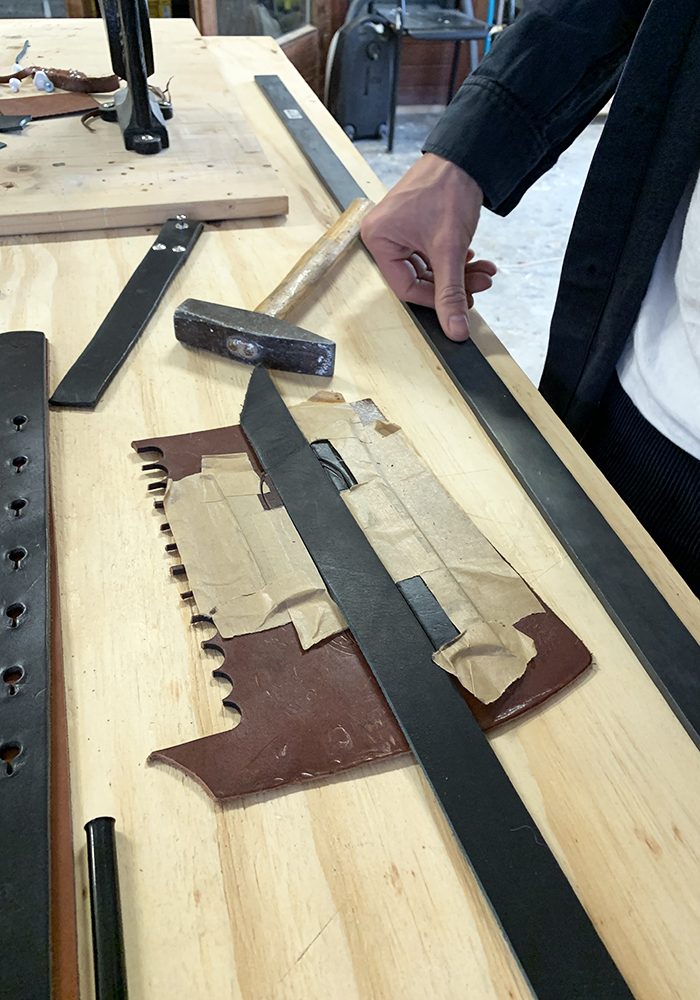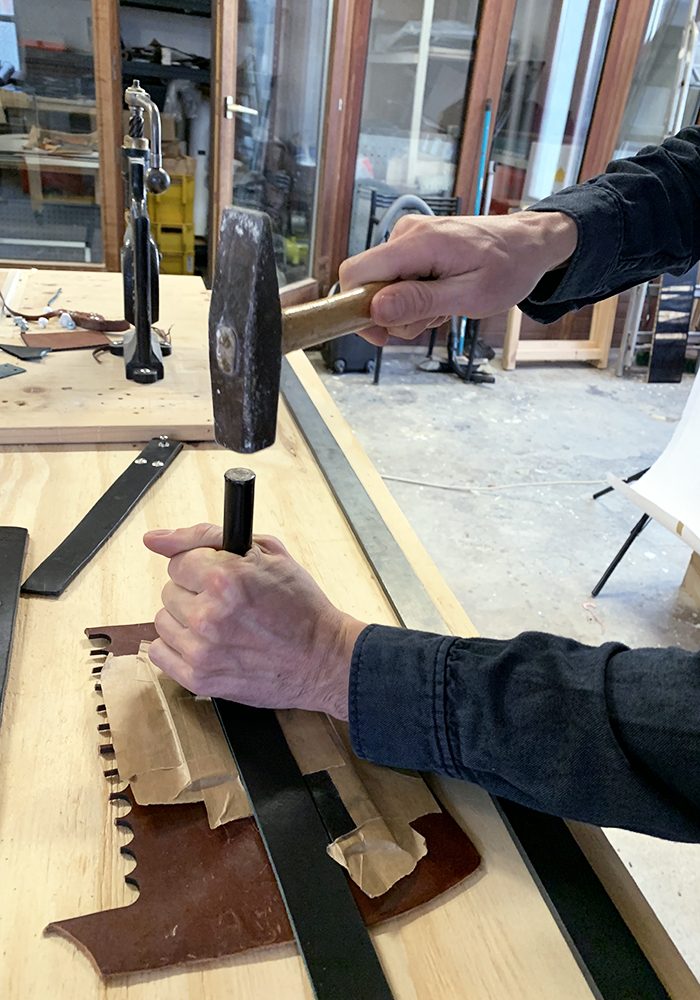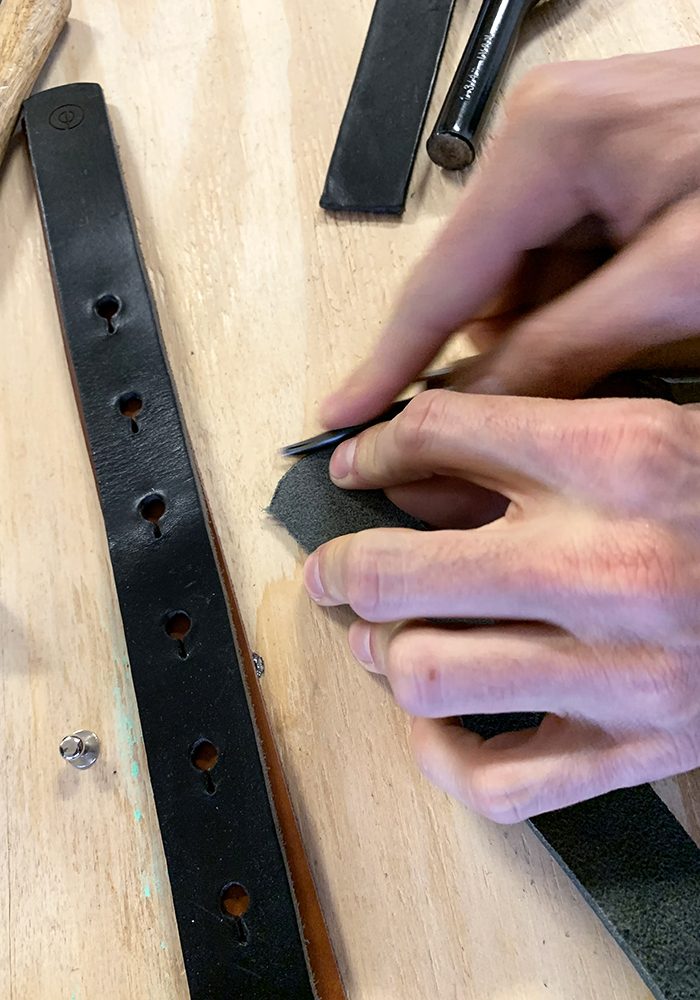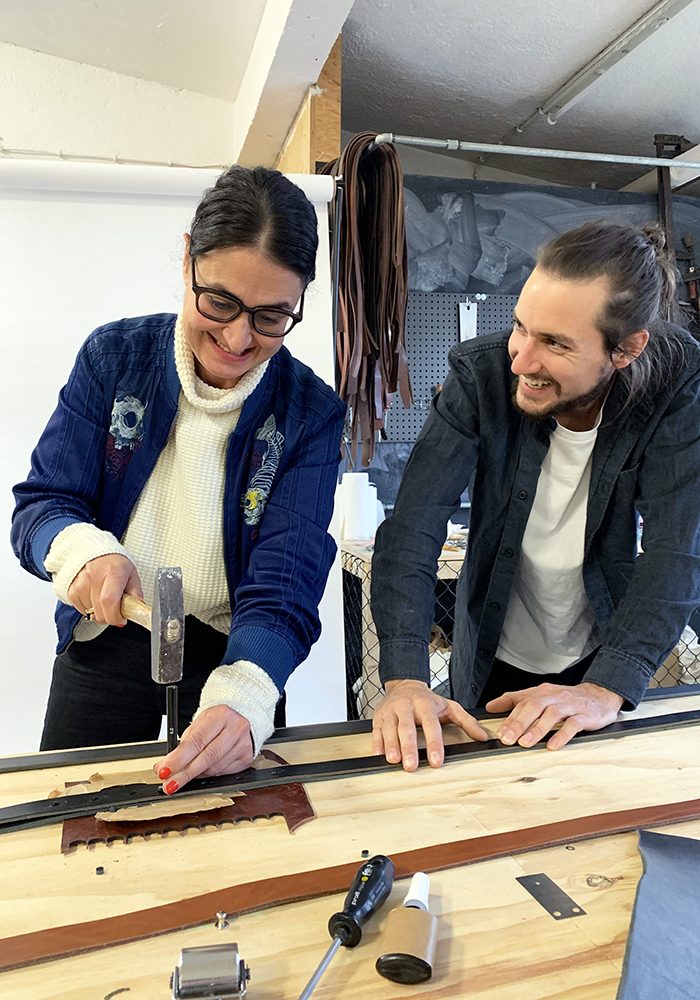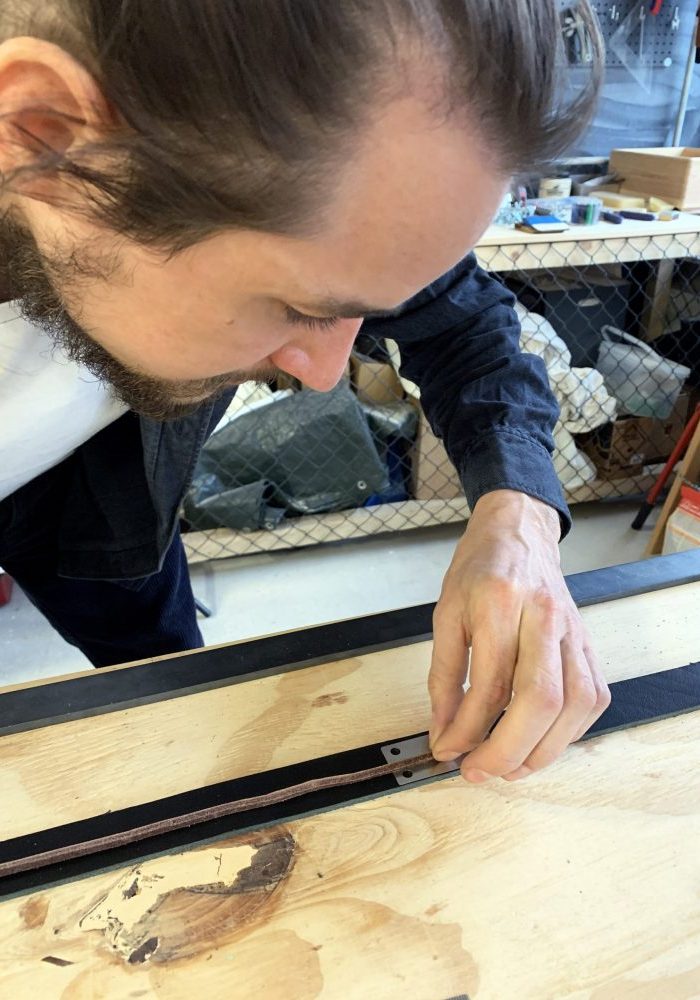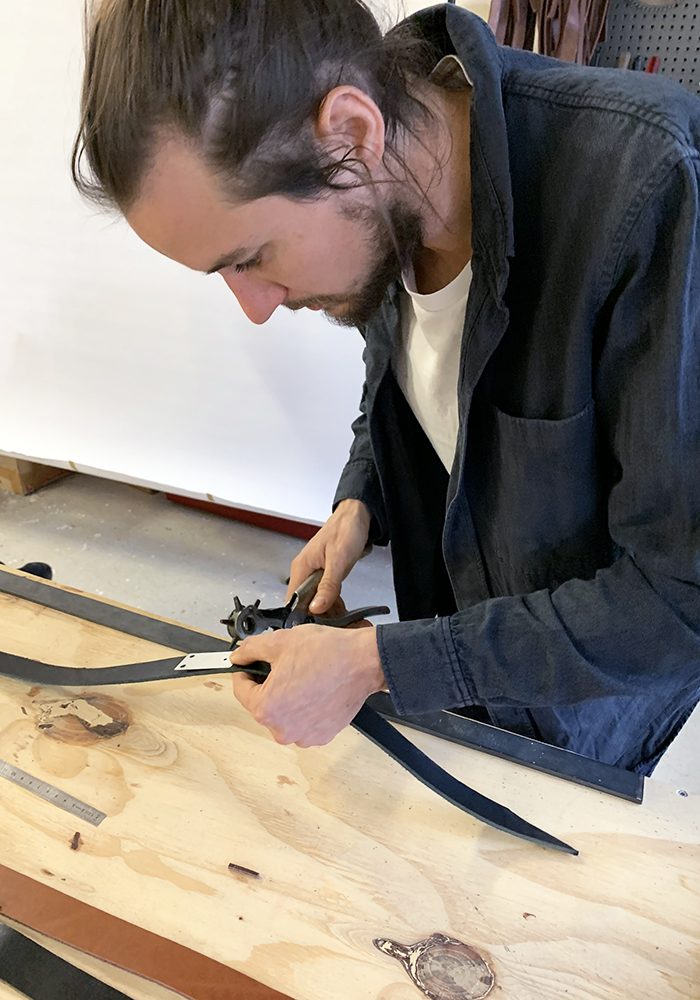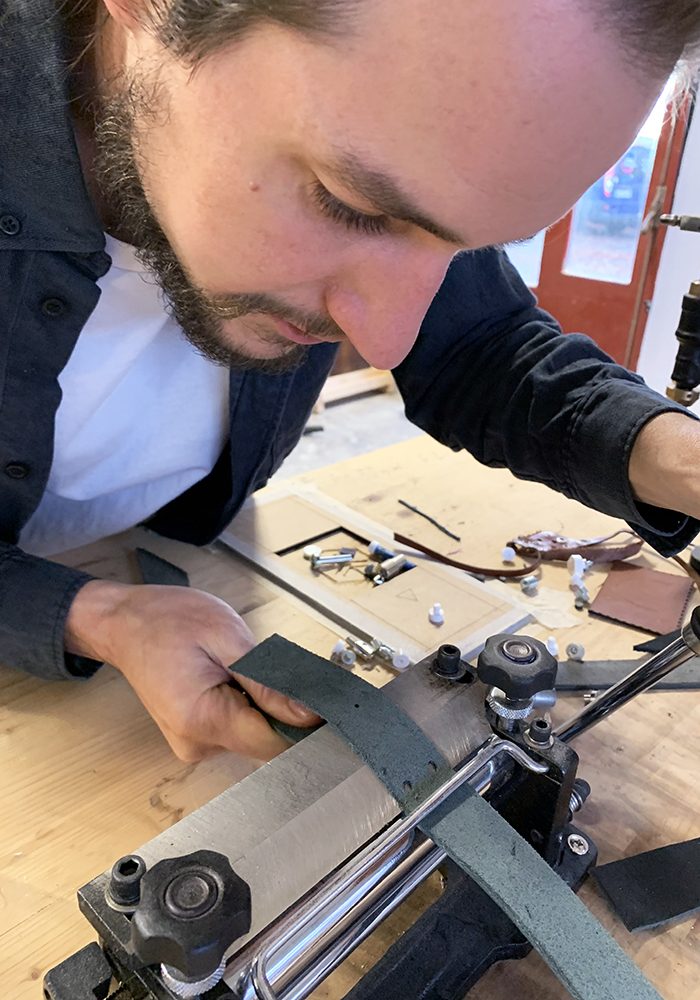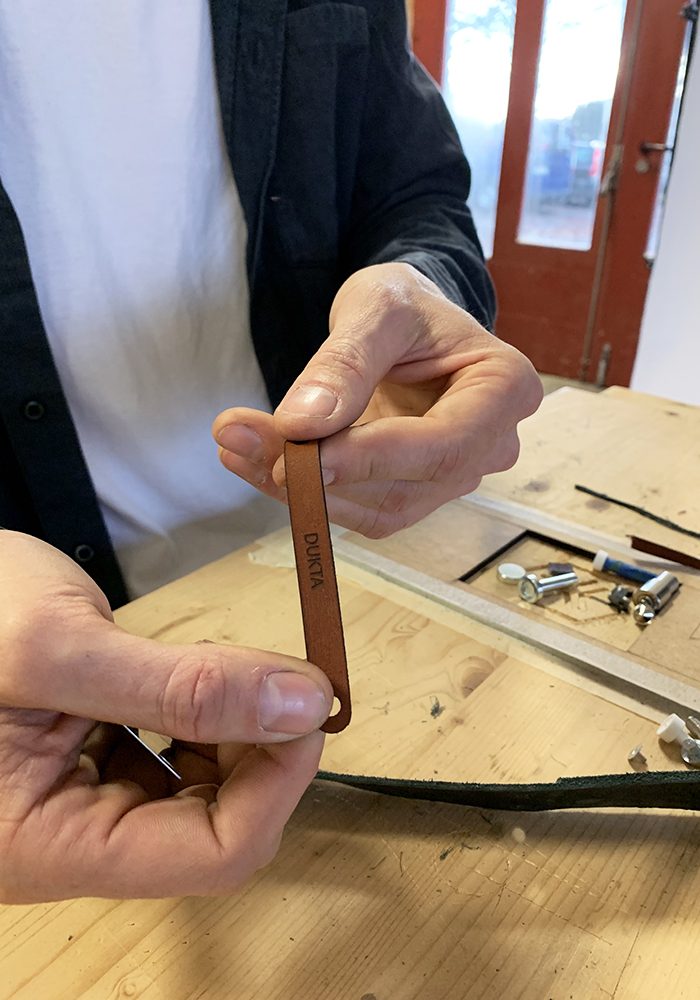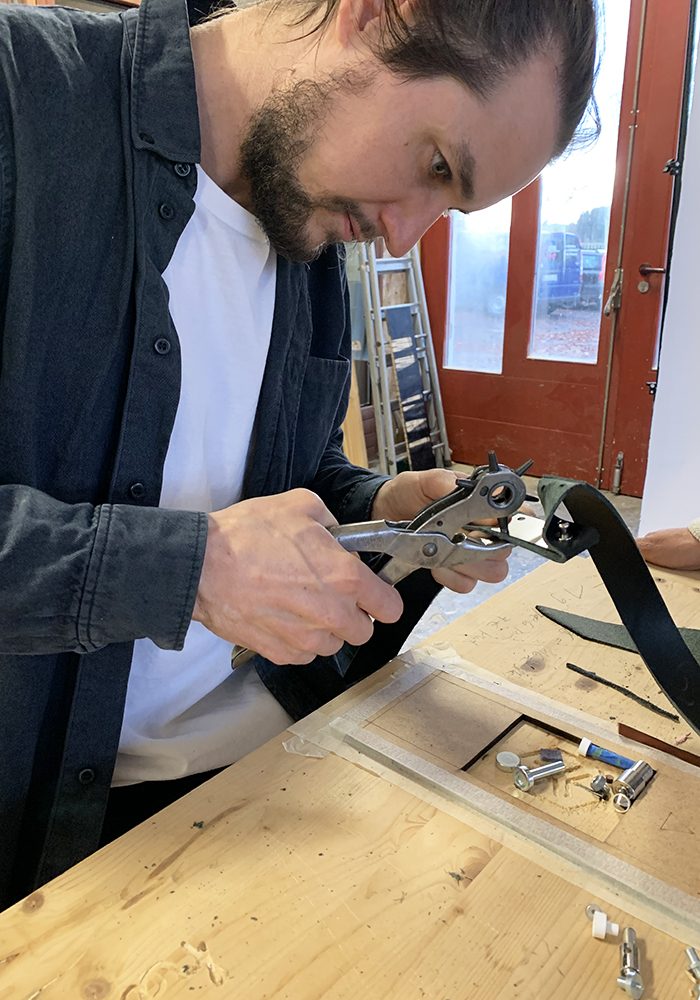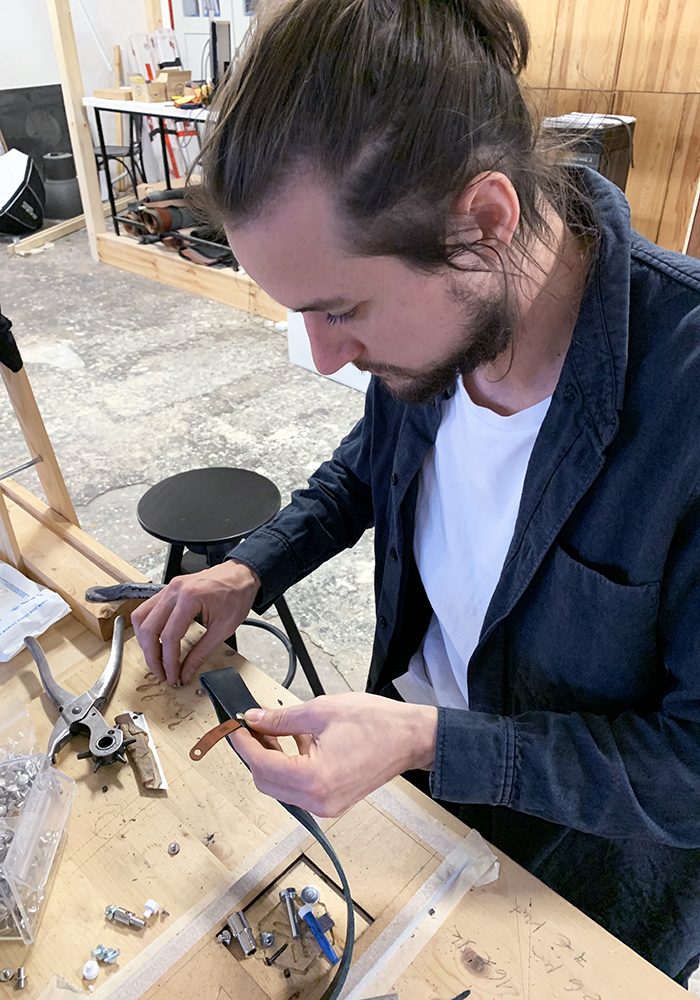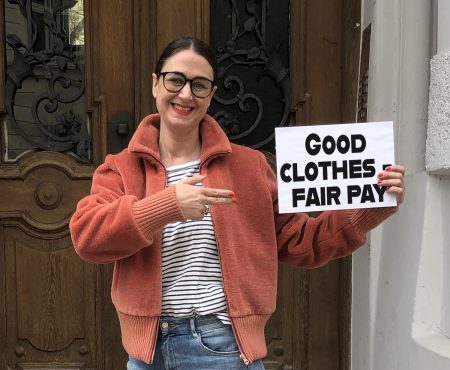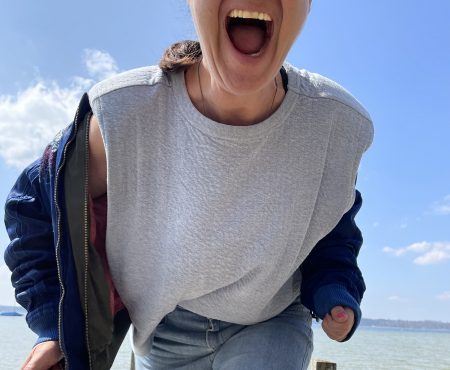***Advertorial***
Why do you have to be so enthusiastic about DUKTA? Because the brand story is so consistently thought out and incredibly authentic. Because the products are so wonderfully minimalist and functional. Because no seam is sewn too much. Because plastic is not an issue. Because the leather comes from cattle in southern Germany and it is vegetable-tanned in a tannery in Baden-Wurttemberg. And because it is so nice that Pascal has created a smart bridge between tradition and zeitgeist with his concept.
DUKTA has not been around that long. But we managed to talk for an entire afternoon about the history of the origins, leather and product development. And kept touching the wallets, cardholders and bags because they were simply implemented in such a refined and fascinating way and are so delight in the hands.
DUKTA is the reduction of the reduction. And that is the concept of the products. I do without anything that doesn’t make sense, that isn’t necessary. Everything about my pieces has a function
It is clear that a conversation with a passionate perfectionist who builds and tinkers with his products for as long as they can not be further reduced and optimized cannot be short. Still, it is inspiring down to the last sentence.

Pascal takes me to the DUKTA World, from the cardholder to the bestseller, the wallet No. 3.
my-GREENstyle: How did you come up with the DUKTA idea?.
Pascal Graf: Just like you, it was a coincidence. After studying architecture, my brother and I packed a jute bag and went traveling equipped with a camera. The first stop was in Spain. Then we went to Morocco. In Fes we visited old backyard tanneries. The tanners stand there in a stone tub and tan the leather with their feet. They are passionate tanners and live and love what they do. Everyone has his own tricks and techniques and they put so much heart and soul into their work. We were very impressed.
my-GREENstyle: And you wanted to share this enthusiasm …
Pascal Graf: We shot a documentary series on site and traced a tanner’s day. With film snippits from the first person’s perspective – you can always see the hands of the tanner and can therefore empathize with the situation very well. Start: half past three in the morning. The day starts in the main market. The trucks that arrive there are loaded with skins twice as high as their actual height. And then there is haggling. Back in town, the raw material is cut, the fur removed … Our enthusiasm for leather was born. Back at home we showed our film at the MCBW (Munich Creative Business Week) and we developed the first leather products under the name DUKTA. The parts looked very different from today. And were also made from a different leather. But it was the beginning of our label.
Products have to be well thought out. Longevity and quality must be part of the design process.
I try to do that as correctly as possible here on a small scale. When my brother focused on his photo career again in 2018, I decided to continue the label independently.
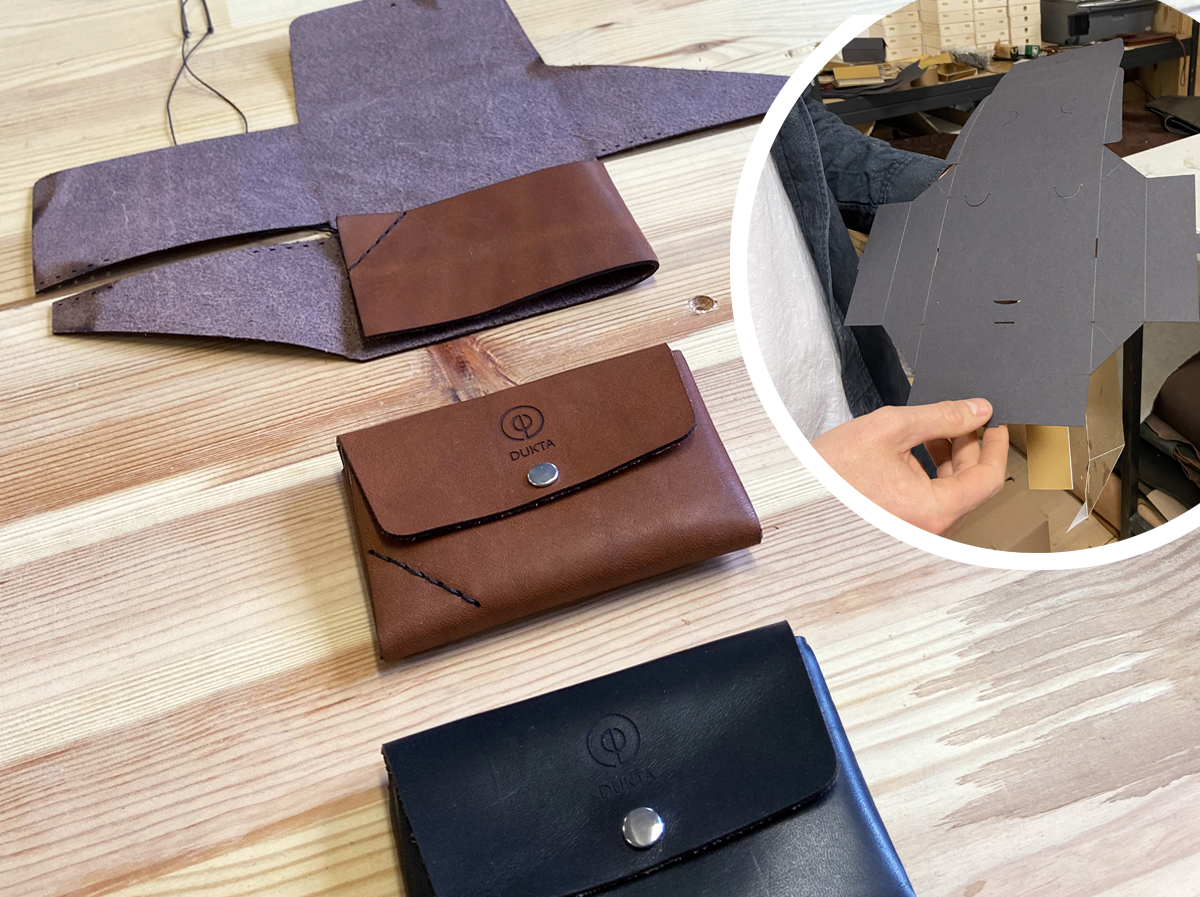
The result of years of work with his products: the (excellent!) One-piece origami folding, in which almost all seams can be dispensed with.
my-GREENstyle: Can you tell us what is behind the one-piece origami fold?
Pascal Graf: I developed this technology and use it for all my products from cardholders to the very large bags. Because the product is cut from the entire leather hide, I can save almost all of the seams. Each fold replaces a seam. This has a maximally positive effect on my parts: a seam that is not there cannot dissolve. What remains are one or two seams that are set in places that have no tensile load. Plastic-free from linen thread and hand-sewn.
A seam that is not there cannot dissolve.
Also the clutch (note: which can also be carried as a crossbody or shoulder bag) is folded from a single piece – including the inner pocket. The locking mechanisms are also exciting. Here, for example, I have incorporated a spring steel clasp, which ensures that the leather fold remains in shape over the long term. It can be closed elegantly with the cartridge button. At any height. Depending on how much is in your pocket.
The folding results in a very special, organic shape. You can tell by looking at the product that it has developed this way. Everything fits together here.
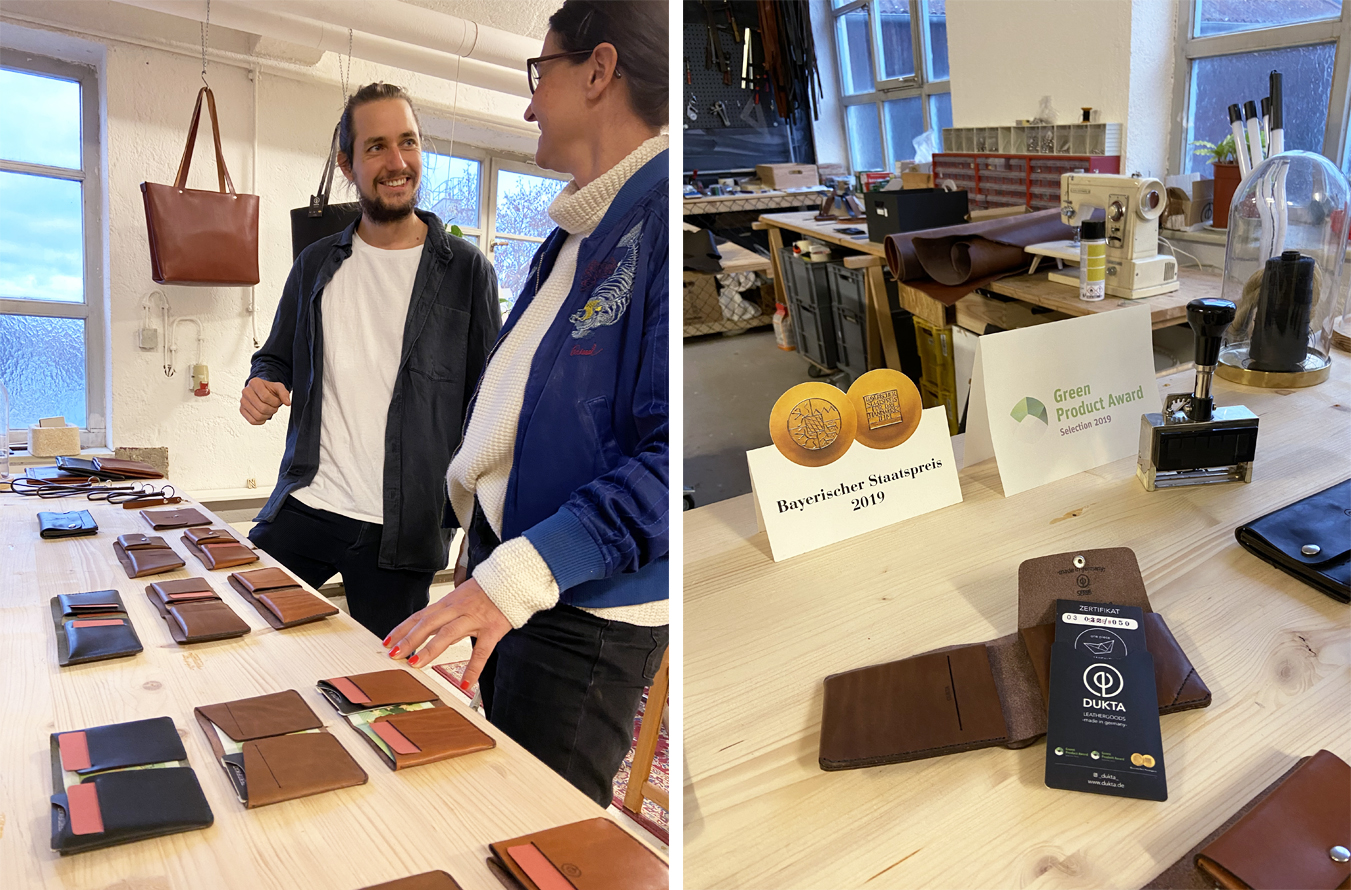
All DUKTA parts are provided with serial numbers and certified. Sure, they are also handcrafted one-offs.
my-GREENstyle: How did you get the idea of folding leather products?
Pascal Graf: In the beginning my products consisted of two or three elements. The one-piece origami fold was a three-year development process that resulted from working with the material. You need patience and you have to give the product the time it takes. Then something useful comes out of it. For example a fold.
Every step that actually makes the product easier offers added value
By the time I got there, I made a whole box of prototypes out of cardboard, felt, and leather. I kept reducing the products. And every reduction makes sense and offers added value. Because the corner is no longer fixed, I have more space for coins. The missing seam creates an additional compartment for parking tickets & Co.
Many people do not deal with things fundamentally. It’s all about that something can be produced as quickly as possible. That is usually not useful. Pascal Graf, DUKTA
Why does Pascal sew everything by hand? It has something to do with quality. The machine seam has an upper and a lower thread. One makes a loop and the other wanders through it. If it tears somewhere, the seam will separate itself. If he sews his classic saddlery seam by hand, he uses two needles at the same time. Because it works in opposite directions, the leather is covered on both sides – the seam does not open. He uses linen thread for this because it is one of the most durable natural fibers. And because everything at DUKTA has been carefully thought out and consistent down to the last detail, it is coated with beeswax from the Lake Constance region, making it even more durable.
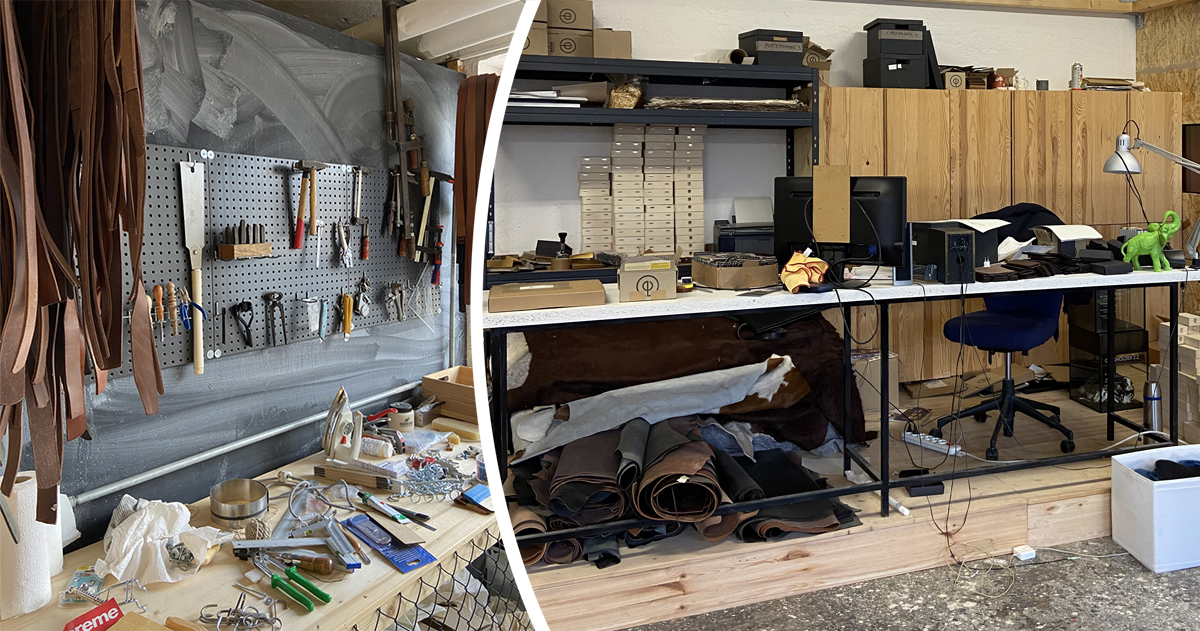
Welcome to the DUKTA workshop. Except for the use of the CO2 laser, everything is still done by hand.
Small leather lexicon by DUKTA
Pascal was so impressed by the tanners in Fes, Morocco that he founded DUKTA. In order to meet his requirements, he went to Germany in search of the appropriate qualities, got deeper into the subject and researched what types of leather there are and what differences there are. How is it tanned. We learned so much during our conversation – that we really want to share it here
♦♦♦ Leather tanning ♦♦♦
After the trip, Pascal realized that there are huge differences in leather. There are three broad main directions: synthetic tanned leather, mineral tanned leather, which is mostly chrome3 tanned, and vegetable tanned leather.
Vegetable tanning
Vegetable tanning is a very old and meaningful tradition. Wood flour, wood bark, rhubarb root and olives are used. Unfortunately, due to time and cost reasons, it has given way to the cheap version with chrome. Vegetable tanning makes more sense for everyone involved from the tanner to the consumer.
Tanning with chrome
90 percent of the leather that is processed is chrome-tanned. Most of it is used by workers, some of them children, under dire circumstances e.g. produced in India and Bangladesh. Often people work there without protective clothing. The workers do not only have contact with the chrome lye with their feet. They often suffer serious damage to their health from exposure to chromium. The average life expectancy of workers is 50 years. The wastewater is discharged untreated into the rivers. Fields are irrigated with it. Leftover leather is burned and worked into the fields as fertilizer. Everything is recycled and causes damage everywhere. Land, people and animals are contaminated by chrome.
Many people are simply not yet aware of the cycles. It doesn’t stop in India either. That goes on to us.
Chromium 3 leather, in the form of a steering wheel, a bag, a seat cover, can transform into Chromium 6 when exposed to sunlight and penetrate the body. The problems don’t stay where they are put. Here in Germany, too, they cause damage to us.
Synthetically tanned leather
Synthetic tanning involves tanning with the help of materials that are artificially produced. Synthetically tanned leather is more susceptible to liquids and heat and is therefore often used in conjunction with one of the other tanning processes.
♦♦♦ Conventional leather dyeing ♦♦♦
Most leathers are surface coated. A basic color is available, but a PU lacquer is sprayed on as a finish, which defines the color and provides an embossing for the desired surface structure.
♦♦♦ Traditional dyeing ♦♦♦
The DUKTA leather is tanned in the tannery according to Pascal’s ideas – in the three versions cognac, brown and black. These are very original tones, which also reflect the color of the tanning. This is made possible by adding aniline, a very old dyeing technique. To do this, the hides lie in a pit until the leather is dyed through. That makes the big difference to the conventional method.
♦♦♦ Split leather ♦♦♦
Split leather is often used. Means: The leather is cut apart in the middle. The inner, fibrous side is used and is often coated with plastics. The skin structure is embossed with an embossing roller. Looks like leather but is only partially leather.
♦♦♦ Upper leather ♦♦♦
At DUKTA only upper leather is used – it is the most compact, the strongest, the most robust.
♦♦♦ Leather thickness ♦♦♦
For each product I have a special leather thickness that makes sense for this product.
Any questions? Feel free to contact the experts directly at info@dukta.de
The DUKTA bestsellers? These are the cardholder 2.2. and the wallet No. 3, which was also the first product – even if it did not correspond to today’s shape at the beginning. Both very flexible products. 12 cards fit in the wallet and it works for all note sizes with appropriate graduation. It’s no wonder that it has now been included twice in the selection of the Green Product Award and has been awarded the Bavarian State Prize for one-piece origami folding.
my-GREENstyle: How can we imagine the creation of a DUKTA product?
Pascal Graf: Product development begins with me filling a stack of sketchbooks with drawings. This is how I develop a form that can go into series production and is still consistent. The next step is paper and cardboard samples. It is glued, folded, tried. Then the first leather models are created, which are cut by hand. Only when the shape fits, it goes to the laser. The things are then digitally redrawn and cut with high precision by my CO2 laser so that I can reproduce my products. The resulting patterns are then folded, sewn by hand and riveted.
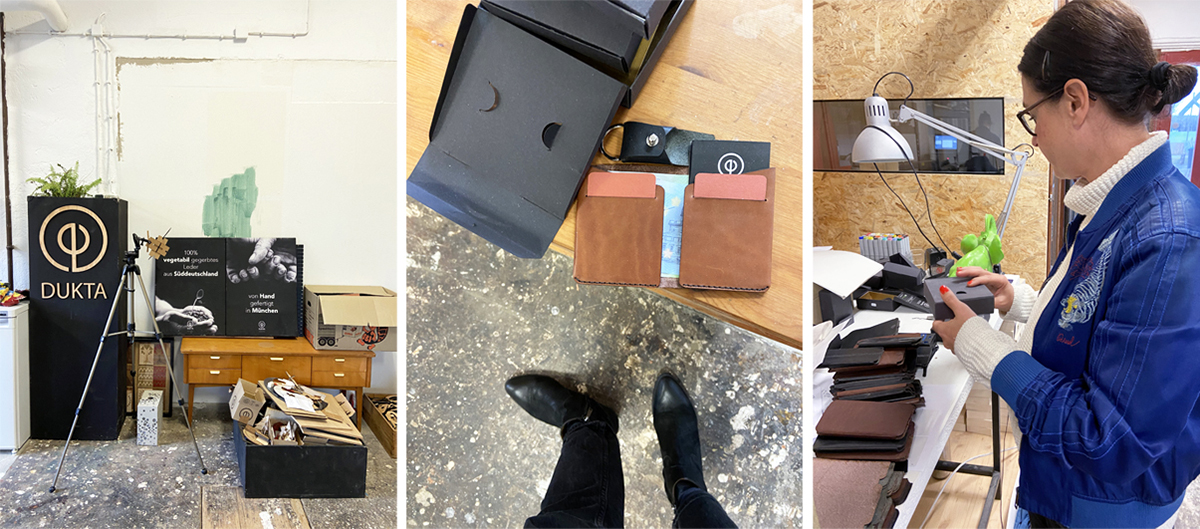
What did I learn today? A lot about leather, enthusiasm and creative visions.
Yeah, that’s fun: let’s make a DUKTA belt
Pascal showed us everything – from the first to the last step, so that you can imagine how many work steps are necessary to produce a high-quality belt. The result is a real gem for Florens (which I will definitely borrow from time to time!).
A clean edge is defined with the metal ruler, fixed and then cut so that the hide can lie down. Only then is it shaped with the belt cutter, which is equipped with a razor blade and a distance meter. It can also be done electrically, but Pascal relies on manual work. This creates the belt, a leather strap that serves as the basis for all further steps. The usual lengths are produced – unless you express other wishes.
Good to know: the hip circumference is calculated from the center hole to the locking mechanism.
The curve at the end of the belt is defined with a hammer, shaped and then cleaned. Then the holes are punched (I tried it too, but was really happy when I was allowed to hand over the punch and hammer to the professional again).
I developed some of my tools myself – just like my techniques.
Another trick: water-jet cut spring steel elements give the belt stability at the point where the mandrel sits. This ensures that the belt can be closed perfectly over the long term. Then the belt is thinned in the closing area. The belt loop is also laser cut. It is fixed with screw rivets. In holes that are first predefined and then punched. Finished.
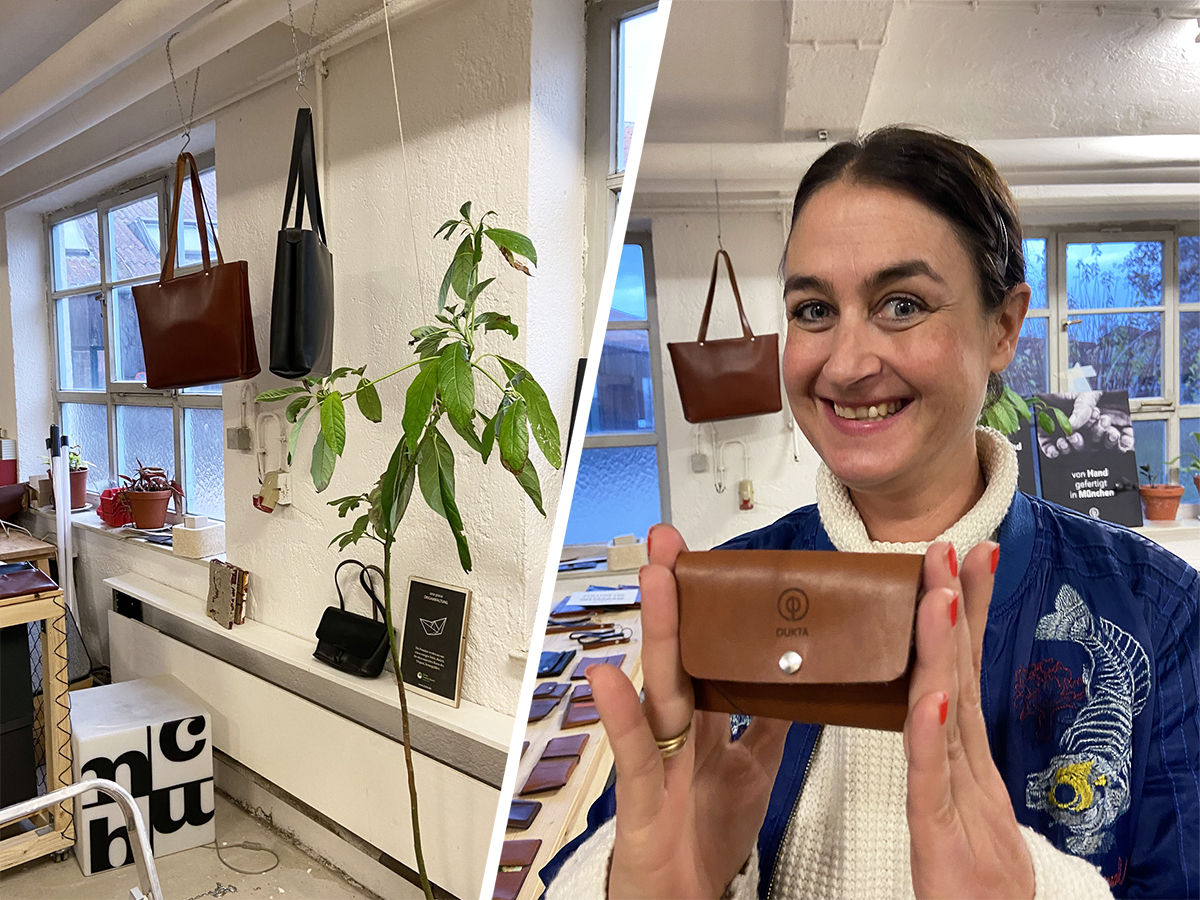
My favorite piece? Hard to say, but the # 2 wallet in cognac is amazing.
A saddler would work differently. But that’s exactly what’s exciting. Otherwise Pascal would never have come across the one-piece origami fold. If you come from a different direction and deal with things, you often come up with completely different ideas. He had a shoemaker show him a lot, which gave him an appropriate basis – otherwise it’s work in progress. Anything that makes sense.
my-GREENstyle: The architect will definitely get through.
Pascal Graf: I have never worked as an architect, but I see it as a very similar task. What I don’t really care about the architecture – you have a long way to go before something comes out of it. And you have a lot of restrictions from all possible directions. It felt a bit unfree to me. Here I have developed a “playground” where I can work very freely and reach a goal relatively quickly.
Having ideas and implementing them – I find this process very interesting. That’s why I studied architecture.
my-GREENstyle: You can do it all by yourself?
Pascal Graf: I still do all the work myself. Except for two women whom I have instructed and who now support me with sewing. I even made instruction videos. It works very well. But not with all products. I’ll sew them myself.
Good to know: DUKTA also accepts commissioned work. Some customers have requests for changes to a product or want to contribute their own ideas. He likes to do that – because he gets direct customer feedback and come across exciting ideas that he can develop further and use for himself.
Pascal is continuously optimizing. Just as long as he finds something that can be improved on his product. In the case of wallets and cardholders, however, he is satisfied. There is no longer any possibility of optimization. They are thoroughly optimized. A lot of development work has gone into this, including for all other products. Pascal is gradually expanding his small, fine portfolio. The belts were added about three years ago and the bags two years ago. And three products are currently in the final phase and will be ready soon. They are a logical continuation of his previous work. One will be a bum bag. It’s about details like the locking mechanism – Pascal doesn’t work with zippers because they break. What’s next? Stay tuned …


